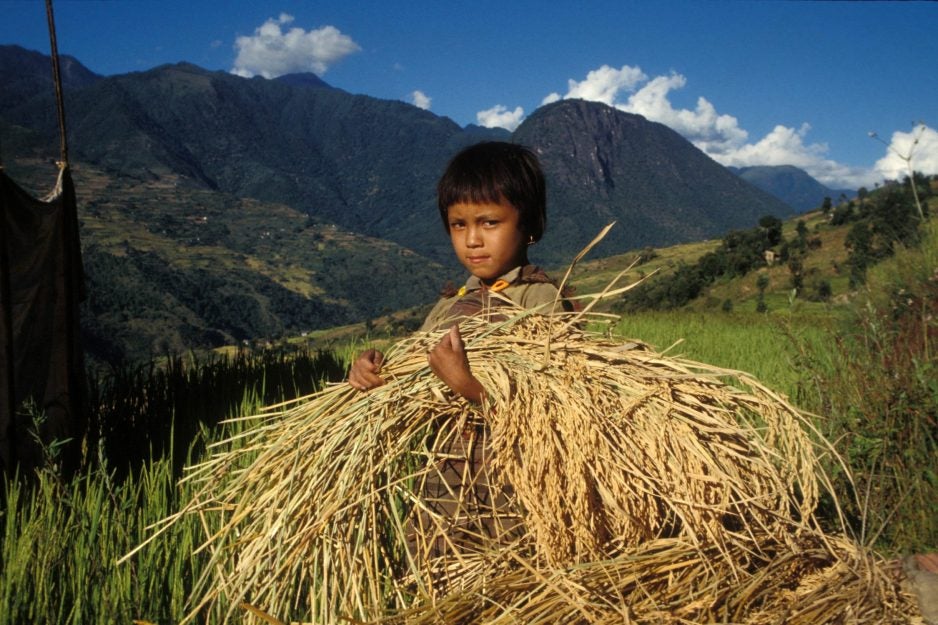
By Elizabeth Donger
The Sustainable Development Goals guide global action to address our collective and most pressing human challenges. September 21, 2016, marked the launch of a Global Alliance to address SDG 8.7: the eradication of forced labor, modern slavery, human trafficking and child labor. The alliance brings together diverse actors to collaborate and support each other in efforts to address these pervasive rights violations. At this side event of the 71st United Nations General Assembly, many of its most prominent members came together to publicly pledge their support.
The launch took place only days after the UN High Level Summit on Migration, and migration was raised several times as an important consideration. The Argentinian minister of foreign affairs, Susana Malcorra, pledged to put migration issues on the agenda of the upcoming global child labor conference in Buenos Aires. She stressed the importance of refugees’ right to work and also the need to understand climate change as a growing risk factor for the most exploitative forms of labor. Others talked about migration not as a risk factor for labor exploitation, but as a cause. Priti Patel, the United Kingdom’s recently appointed secretary for international development, argued for increased border controls to confront trafficking. “Let’s face it,” she said, “open borders facilitate this crime and exacerbate the situation.”
This discussion of migration notwithstanding, the majority of the conversation focused on child labor, which was addressed interchangeably with the other issues on the table. ILO Director General Guy Ryder encapsulated this with: “Some think of these issues as separate, but we know that they have common roots and common remedies.”
Among the common roots discussed were lack of political will and lack of access to primary education for children. Issues of quality of education or access to higher education did not feature. Systemic inequalities in global development was another major issue cited, signalling a direct linkage of poverty with child labor and modern slavery. However there was little discussion of other relevant complicating factors, or of the role of child labor and modern slavery in perpetuating poverty.
In terms of remedies, the most prominent among those discussed was inter-stakeholder cooperation and alliance, though little insight was offered as to what these relationships should look like in terms of responsibilities, incentives and accountability structures. One concrete example was provided by the First Lady of Cote d’Ivoire, who spoke about her efforts to remove all children from working in cocoa fields and into schools through collaboration with unions, school systems and businesses.
Kevin Hyland (UK Independent anti-slavery commissioner) offered another concrete example, speaking about the Santa Marta Group, a global alliance of international police chiefs, bishops and civil society groups endorsed by Pope Francis that works to eradicate human trafficking and modern day slavery.
Substantial attention was given to the role of the private sector as a funder of programs and schools, and also as a direct actor in eliminating modern slavery and child labor in its own supply chains. Hyland also discussed the importance of legislation to hold businesses to account, while others focused on voluntary measures.
Shanon Burrow, general secretary of the International Trade Union Confederation, said that the only way to address exploitative practices like the Gulf States’ kafala system is to stop commercial activity with those states. “Just don’t do business with slave states. Demand change if they are going to be a part of the global economy,” she said.
Notably, there was no mention of the role of local and national nonprofits in designing and implementing contextually relevant response and prevention strategies, or of the importance of including the voices and perspectives of children and other victims of forced labor in strategic discussions.
Panelists spoke passionately about ending modern slavery altogether and for good, though made few concrete commitments. The International Labour Organization pledged to more effectively share its data and research, and the US Department of Labor made a $9 million pledge to the ILO for monitoring and evaluation research.
The alliance signals an important shift in international and political support for efforts to address extreme forms of global labor exploitation. Yet the more difficult work of translating elegant speeches into concrete commitments lies ahead. In this task, simplistic pictures of common roots and common solutions must give way to more participatory responses and nuanced perspectives on these entrenched and different problems.

